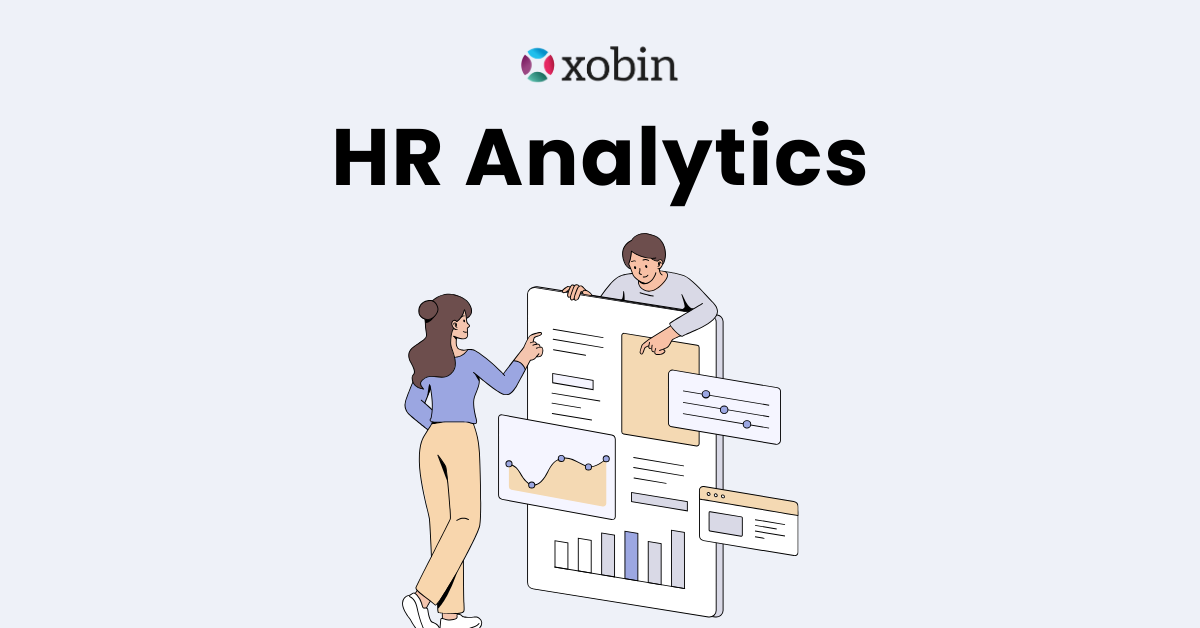XOBIPEDIA
HR Glossary

What is HR Analytics ?
HR analytics refers to the process of analyzing the HR functions at your company. It is an approach to draw insights about the people at your company and work towards solving their problems. HR analytics is concerned with monitoring, collecting information about the human resources at the company, and managing their employees better.
It is used to understand the issues in HR functions and undertake the necessary measures to address those issues.
It allows your company to measure the effect of HR functions on your business performance or your revenues.
HR analytics help in human resource management in a more scientific manner and is data-driven.
What is The Difference Between HR Analytics, People Analytics, and Workforce Analytics ?
| HR Analytics | People Analytics | Workforce Analytics |
| HR analytics is an extremely narrow term that deals with HR functions. HR analytics is used to analyze the processes in the HR department and take reasonable actions accordingly. | People analytics is a more broad term in comparison to HR analytics. It is not limited to its employees but refers to managing all the people connected with your company. It might be your employees or your customers. | Workforce analytics is typically responsible for managing the employees of the company. It includes all the employees whether full-time or part-time. It is used to manage employees of the company and listen to their problems and take reasonable actions to those problems. |

How Does HR Analytics Drive Business Value ?
Just like customer experience, employee experience plays an important role in the success of a company.
HR analytics make use of valuable employee data to bring useful changes to the company. It is quite similar to how consumer data use consumer data to make decisions to maximize their sales.
HR makes use of the employee data, to improve employee engagement, an experience that eventually brings a positive impact on the business.
The data helps companies in analyzing various factors that affect employee performance.
It helps them to analyze and understand the characteristics of efficient employees and what are the discrepancies observed in employee performances. HR analytics helps in improving your hiring decisions and scout suitable for leadership positions from within the company.
HR analytics plays a major role in improving the business value of a company. The data gathered help in gathering and making useful insights about employee performance, engagement, and experience. All of this, in turn, allows the employees to perform at their best self and drive more business for the company.
What Metrics Does HR Analytics Measure ?
Here are some of the metrics measured by HR analytics-
Turnover Rate
The turnover rate refers to when employees leave the company and are replaced by new employees. It can be calculated by dividing the number of employees left by the total number of employees in the company.
It can be divided into two categories-
- Voluntary turnover- When employees leave voluntarily.
- Involuntary Turnover- When employees are forced to leave.
It helps in determining different factors responsible for attrition in the company and allows the company to act accordingly.
Revenue Per Employee
It refers to the average revenue that each individual employee earns for the company.
It can be calculated by dividing the revenue of the company by the total number of employees in the company.
It helps the company in determining whether their employees are efficient in their workings or not.
Absenteeism
Absenteeism is a major factor determining employee engagement in the company. It helps in determining whether the employee is regular or not.
It can be calculated by dividing the number of leaves by the total number of workdays.
It helps you in drawing insights about your employee’s happiness and provides suggestions as to what you can do to improve that.
Training Efficiency
It helps in determining the efficacy of training programs for the employees.
Training efficiency is measured post a training program for the employees. Factors like performance improvement, better revenues are indicators of training efficiency.
Talent Acquisition
It refers to how good a company is in acquiring fresh talent. It can be determined by finding out the offer acceptance rate. It refers to the number of offer letters accepted to the number of offer letters issued.
It helps in finding out any discrepancies in the talent acquisition strategy of the company.
We hope this blog helps you understand HR analytics in detail. For more insightful blogs;
Recommended Content

Video Interviews can simplify your hiring
Don’t let a packed schedule be a hindrance in recruitment. Use structured interviews with the power of video to screen applicants. Understand the communication skills, motivation, and job skills using video interviews.

Pre-employment Testing: The Complete Guide
Move over from pen-paper based tests and manually checked assignments to pre-employment assessments. Democratize your organization hiring by screening for skills before you interview.

How can Employers adapt to Remote Hiring
With most jobs going remote, your best applicants could be in Melbourne or Miami. From remote screening and virtual interviews to remote onboarding, Learn the best practices to get started.


